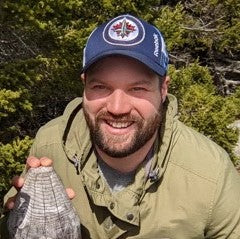There is no magic pill you can take to get better at putting. That’s just a meme that floats around every once in a while.

(And it’s absolutely the best option on that chart) You’d get sick of beer. OB strokes don’t matter as much as putts, and every putt hitting the chastity belt would go in from 30 feet anyway.
So while the most effective thing to do is practice, today I’d like to teach you a trick about making sure that you’re missing high or low and not side to side when you putt.
Why is missing high or low better than missing side to side?
Great question! It’s just fewer variables to mess with. Missing high means you may hit the flag (or over it), low means the basket/pole. Sides can mean you miss and roll away or go fairly far.
There’s going to be exceptions to this, but for the most part I’m a fan of missing low or high because in the end I feel like I get better results.
You’re still going to miss right and left sometimes, especially from long putts (40+ feet). But they’ll be much rarer.
Okay so how do we always smash the putt, or high, or low?
Tip #1 is focusing on a point on the basket and throwing through it. My goal is to make the putt, but if I miss it I want to draw metal. Don’t be worried about missing the putt and having to make the comebacker.
This means putts with some force behind them. You don’t want a putt to flop from high to low in the basket, you want it to land there with some force behind it so it slaps the chains and falls in.
Tip #2 is to keep within your body.
When putting, line yourself up with the basket. I point my right foot directly at the basket and square my shoulders so that I’m facing it. Here’s Paul McBeth on Hole 17 this year at worlds. Look at how he brings his arm down in front of him and low. Even as he extends his arm after he releases his putt, it stays inside the shoulders.
Some newer and amateur players have a tendency to bring the disc to the side. They swing their body a little bit from side to side when putting. This generates power the same way a backhand does, but you don’t need that much power to putt.
You can either use your phone to record yourself or have a friend watch you. Make sure that no part of your putting routine takes your arm outside of your shoulders. This is how players like Paul tend to miss low or high and not side to side.
If I miss then I have a long comebacker putt, and I’ll miss that. I should have laid up instead of running it.
Math is going to be on our side!
Say you improve your putting from 5 out of 10 to 6 out of 10 from 33 feet. That’s 20% more made putts from you!
Over the course of a round that’s 3 strokes you’re saving. Even if you go long and miss your comebacker twice in a round you’re going to end up a stroke better.
If you start making more putts by going for it, you’ll be a better putter. You’ll start making more of those and more comebackers.
You can run it and be in for 1. Lay up and be in for 2, miss and make the comebacker for 2, or miss and miss the comebacker for 3.
Use the same disc to putt with, not two different discs.
This is vitally important. Don’t bring a stack of wildly different putters with you to practice. I highly recommend getting at least 1 backup of a putter that you putt with. I always bring a couple with me. If you miss a putt from wherever, use the second one as a practice shot. Even if I make a particularly difficult putt, I bring out my other putter and shoot that one as well. I tell folks that at Sabattus we charge by the round, not the stroke.
I often work with new players and they show me that they have an Aviar and a Rhyno to putt with. They’re very different discs and will lead to lots of different kinds of throws. If you find a putter you like, snag a couple of them.
The Circle 1 stat is kind of a misnomer, and while I reference it for pros, it’s too broad.
I’ve gotta be a 97-98% putter from 8 feet. I’d say that my misses from that range come when it’s incredibly windy or I’m the first one to throw on a basket in the winter and the chains haven’t thawed yet.
They took the bullseye stat for pros which is anything inside of 5 feet not counting toward circle1. It’s because that’s so close for them that it’s almost impossible to miss. I think that should be expanded to 10 feet. Anytime I see anyone inside 10 feet I’ve already counted that as a make in my head.
Is there anything that will make putting practice fun?
That’s the problem with putting practice right? It’s not nearly as much fun to hit 20 footers over and over.
I’m a big believer in trying out new games. For a while I played where I had to make all 3 putts at 10, then 15, then 20 feet, before I could move on.
I tried playing Horse, using cones, doing the 10 feet back every make to see how far I could putt in an hour.
It’s going to take a lot of trial and error for you to find something that you can enjoy and stick with.
Right now what game works for me is some of my favorite music jamming in the background, and I like to putt at 20-30 feet and aim for disc dots. I’ve covered my basket in them, and I try to hit the exact one I’m aiming for. It’s no longer enough for me to want to make a basket, I want to hit the color that I’m aiming for.
Find something that works for you. Invent your own game! Maybe it’s just the decade-long stint I had as a camp counselor, but I love creating new games. As long as you’re outside and trying to make a putt, you’re practicing.
So what are the keys to making more disc golf putts?
- Practice.
- Keep your arm within your body.
- Believe you’ll make the comebacker putt.
- Have a few of the same disc to putt with.
- Do something to make putting practice fun.
If you follow these steps you’re going to notice an increase in your made putts. That lowers your scores, and in turn leads to a great time out on the course. Good luck out there, and let me know if there’s any putting tips or tricks that work for you.
May your discs miss all the trees,
Andrew Streeter #70397
 207-375-4990
207-375-4990

